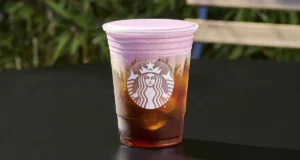The results are in! Chasing opens would have lost Obama the election
There is little doubt in my mind that email was the No. 1 non-political contributor to Obama’s win in the 2012 US Presidential race. 75% of the $934 million raised by Obama was attributed to digital and nearly all of that $700 million was raised through email
That fact alone is phenomenal.
But it’s not until you start to drill down into the data to find out why Obama’s email campaign was significantly more effective than Romney’s that the exciting insights start to appear.
Marketing pundits from all channels have offered their opinions. Just look at the word cloud based on the top 15 blogs about Obama’s email strategy – targeting, testing, creative, subject lines – everything but the two biggest contributing factors: list size and mailing frequency.
Why have these been missed? Because it is relatively easy to get a sense of a campaign’s creative, subject line strategy, frequency and, to some extent, personalization by simply subscribing to a list. What you can’t find out is how large that list is or how much segmentation is being done. That makes it almost impossible to know how many emails are actually being sent.
Enter eDataSource … Scratching below the surface with eDataSource
So, we recently took out a subscription to eDataSource and let our analytics team loose on their web-based tool that combines active monitoring of over 800,000 consumer inboxes with a library of millions of digital marketing messages from thousands of brands. This impressive breadth and depth of reporting gave us everything we needed to find out what really made Obama’s email strategy so effective.
First up was to prove my prediction back in October that Obama would win because he was sending significantly more email to more people. Using the Federal Election Commission, we were able to attribute all donations over $250 to each campaign for the 79 weeks running up to the election. We then plotted this against the corresponding weekly send volumes taken from eDataSource. The trend lines tell the story more succinctly than any blog: the more emails each campaign sent, the more donations each campaign received. If the purpose of each campaign was to generate revenue, then it was frequency and list size that had the biggest impact on performance.
What I couldn’t predict was what we found when we dug deeper into the data – the send volumes for each campaign had a striking correlation with the probability of each campaign winning based on the opinion polls …
Obama – the President who ignored open rates
We pulled the send volumes and open rates for both campaigns in the two month run-up to the election and compared these to Nate Silver’s Poll aggregator for the 2012 election. His algorithm has correctly predicted the winner of 99 out of 100 states in the last two elections, so it gave us a highly accurate winning probability at each point during the campaign. As Obama ramps up his send volumes early in the race, his probability of winning increases. Romney also increases his frequency at a similar rate but, because his list size is 15 times smaller, his growth has little effect on the polls. List size matters.
When Obama reduces his send volumes by 38% his probability of winning drops by 42%. By contrast Romney’s campaign grows by 180% and his chances of winning increase by 160%.In the final push, Romney reduces his send volumes and with it his probability of winning. But his open rates improve by an impressive 14%. Obama takes the opposite approach and aggressively increases his send volumes, which improves his probability of winning.
And Obama’s open rates? They plummet by 14% to a campaign low … and he wins the election. Obama’s email strategy?
Send more, raise more
Had Obama chased open rates would he have lost the election? Well, what we do know is the best way to achieve that goal, as shown by Romney, is to reduce send volumes. Of course, send volumes don’t win elections, donations do. So we set about finding a correlation between send volumes and donations to add weight to our theory. Graph 3 plots annual donations against annual send volumes and open rates for the Obama campaign. The correlation between send volume and donations is undeniable – in fact, they are close to an exact match. The general trend is for a steady increase over the year until a drop off at election time.
But more interestingly – and this may surprise some people – the relationship between open rates and donations is an inverse one! Or, to put it another way, the higher the open rate, the lower the number of donations. Why? Because, broadly speaking, there is an inverse relationship between send volumes and open rates. The more email you send, the lower your open rate is likely to be. But if doubling your send volume only results in a 15% fall in your open rates, then you will be significantly better off. So why is revenue so closely linked to send volumes? Because people cannot engage with an email they do not receive. Replace the word ‘email’ with ‘opportunity to donate’, and “an extra email send to 1 million people” becomes, “let’s send another 1 million opportunities to donate”.
While relevance, engagement, creative, subject lines, testing and targeting all played a part in Obama’s success, they pale into insignificance when compared to the impact of reach, frequency and list size. And best of all? With email, you can optimize all of these at near-zero marginal cost. But does it work in retail? Hell yeah!Obama’s campaign is one of the few examples of a noted sender admitting that increasing frequency works. The data backs it up, too. But does it work outside of the rarefied world of political fundraising? The answer is “hell yeah!”
With the help of EDS Analyst, you too can find out if you are being out-mailed by your competitors. If the answer is “yes”, then they are probably out-selling you as well – and we shall be digging down into the data for that particular topic in next month’s blog. Keep your eyes peeled.
If you’d like to know more about how we use EDS Analyst to optimize email strategy, then get in touch.
And if you want to replicate Obama’s success for your own email program, then feel free to use these strategy ideas from this post from our blog: FIVE reasons why open reach will revolutionize your email marketing. More next month …
Last updated: May 06, 2015




